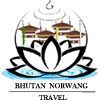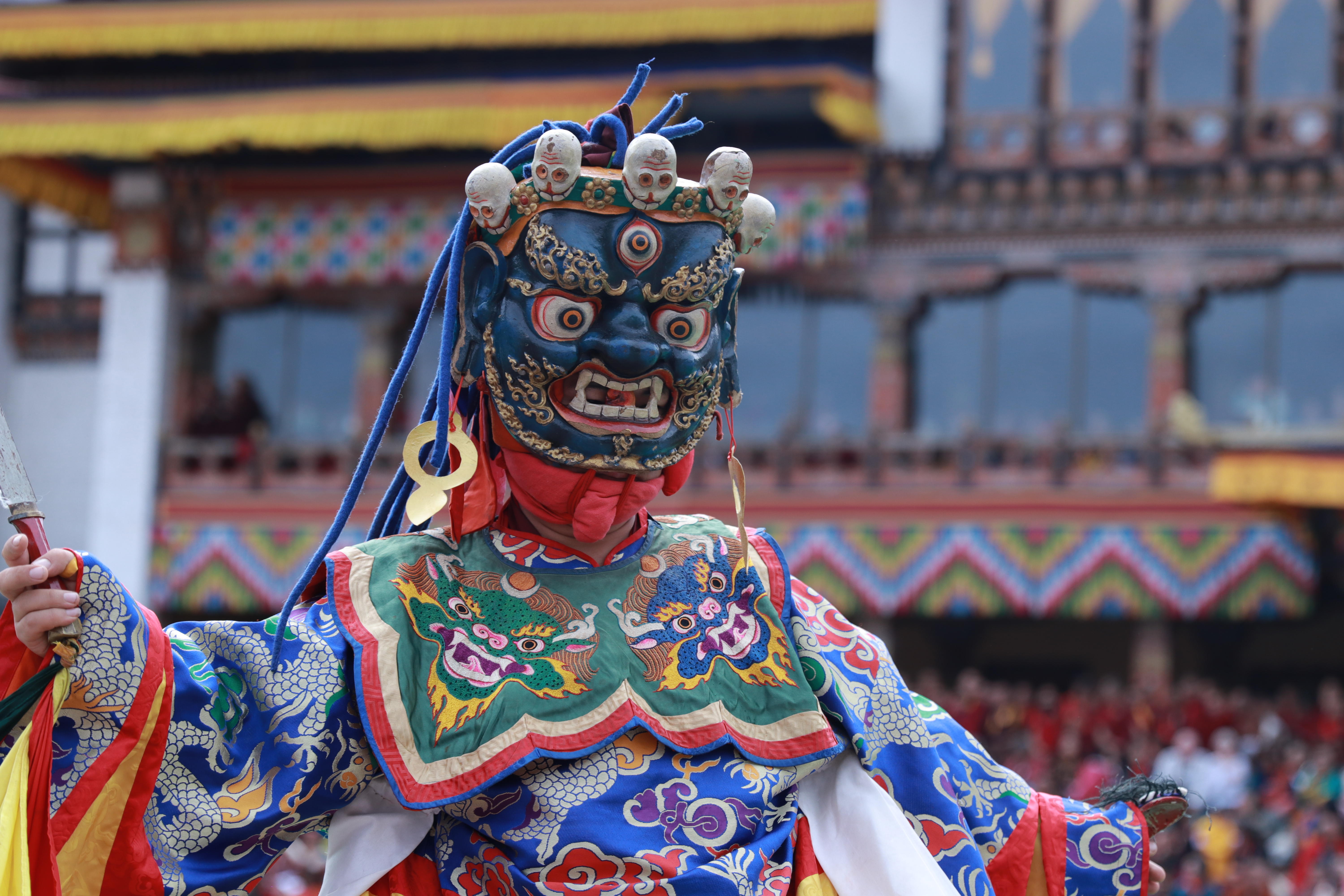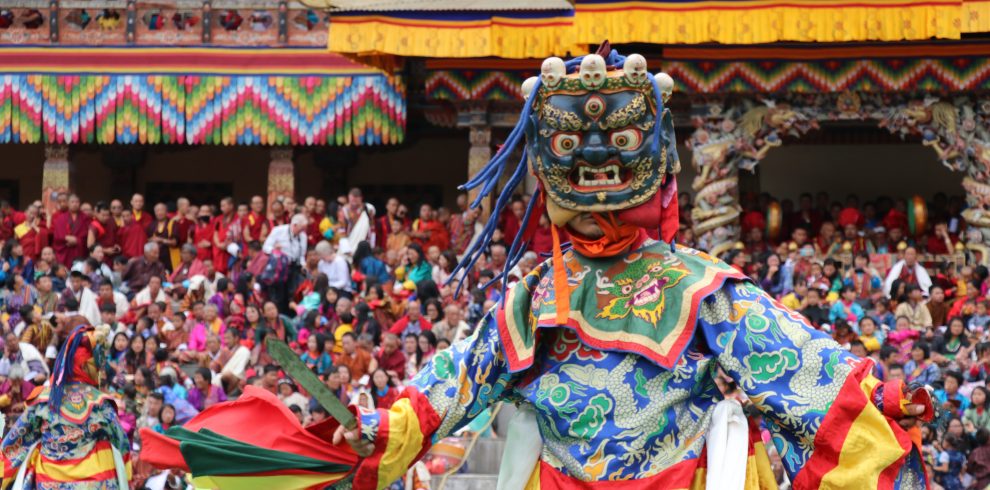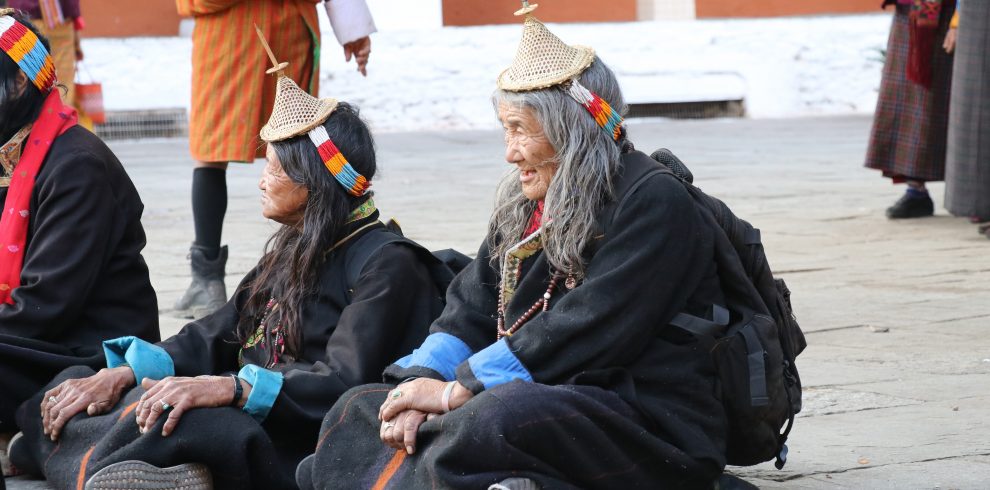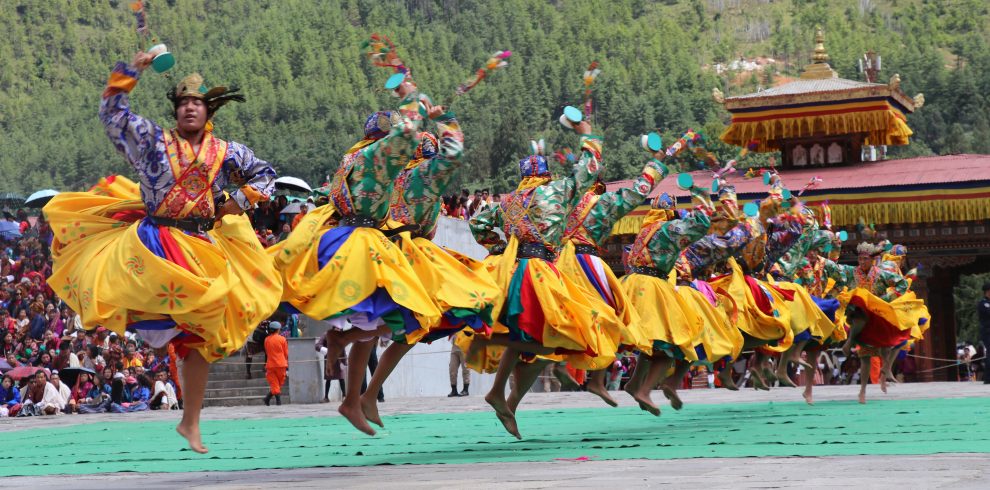Location: Town festival ground, Haa District
Festival date: 4th & 5th July
Alpine Festival in the Mythic Valley of the Guardian Spirit
<strong>Mythic Valley of the Guardian Spirit</strong>
<p align="justify">Explore the high alpine valleys of Haa, a region blessed with glittering peaks and pristine lakes. Learn about the nomadic life and tap into the ancient cultural rhythms of Bhutan with the sanguine Haaps, as the regions people are known. Among the highlights of this journey will be an opportunity to sample home-cooked delicacies favored in the region, washed down with the fiery ara brew that the locals love to drink. Take a ride on a yak (or a horse), compete in a traditional game of khuru, archery and soksum, Bhutans answer to the Javelin throw (albeit a light one) and enjoy the folk songs and mask dances which underpin the seasonal celebration in this colorful part of Bhutan. Be among the few travelers to discover the Mythic Valley of the Guardian Spirit, a region that is a journey in itself or a wonderful gateway to your Bhutan experience.</p>
<strong>Regional Background</strong>
<p align="justify">Ancestral home to the Dorji family, the people of Haa inhabit the high valleys above 3,000 meters. Strong-boned and resilient, the people of Haa are devout and hardworking yak herders and farmers who cultivate high altitude crops such as wheat, potatoes, barley and millet. Their religious life revolves around the appeasement of Buddhist and Shamanic (Bon) deities and entities including Ap Chhundu, their guardian spirit, believed to protect all people born in Haa.</p>
<strong>Things to See and Do</strong>
<p align="justify">Like most Bhutanese people, the Haaps love their food. At the Alpine festival, look for Haapi Hoentoe, the hearty dumplings made from buckwheat and filled with pungent grated turnip, dried turnip greens, mushrooms, garlic, onion, and chopped cabbage, with flavours enhanced by ginger, ground walnut, chili-powder, salt butter, sesame, and poppy seeds. Among other recommended delicacies: the fiery national dish, Ema Datshi, which is served in Haa with a regional twist that features yak cheese instead of regular diary; and, if your diet doesn’t restrict it, tender slices of yak meat served prosciutto-style with local drinks.</p>
<p align="justify">In song and dance, the Haaps have especially honed their skills on the long and sonorous Haapi Ausa, which extols the virtues of their yaks. Generally sung while tending yaks, they are also performed as a wistful farewell to family members embarking on long journeys. The people of Haa are also passionate about archery and the competition between village teams can be fierce. Don’t expect to see silent moments of concentration with polite clapping for a keen shot; instead laughter, singing and friendly taunts prevail. At the Alpine festival take the opportunity to dance with the lively Haaps or test your skills with the traditional bows and arrows.</p>
<p align="justify">Stop by the temple dedicated to Ap Chhundu and hear the caretaker recount timeless tales of the old guardian or visit the fortress of Wangchulo Dzong. Another interesting monument, the five-storey Dobji Dzong, sits perched on a dramatic hill on the old highway to Haa, near the confluence of the Wangchu and Paachu rivers.</p>
<p align="justify">Other places of interest include Lhakhang Karpo, or Temple of the White Dove, and Lhakhang Nagpo, the Temple of the Black Dove, both of which date to the 7th century, forming part of a larger complex of temples at the foot of three mountains collectively known as Rigsum Gonpo.</p>
<p align="justify">Schedule your visit during annual Haas Alpine Festival to see the weaving and making of a yak hair tent from scratch! Expect to see a variety of yak products on display including coveted bundles of white yak tails (which are believed to bring good luck to one’s home), learn about the traditional process of yak shearing and wool-making, and see how yak dairy is turned into delicious traditional meals that showcase the culinary traditions of Haa. Since people of Haa are also known for their skills in the traditional 13 Arts and Crafts of Bhutan, you are also likely to stumble on beautiful one-of-a-kind bargains crafted from gold, silver, bronze, clay, slate, and wood.</p>
<p align="justify">As an added highlight, be sure to catch the Nublang Cattle show at the Alpine Festival. A breed of cattle unique to the Haaps, the Nublangs trace their origins to a legendary lake called the Nub Tshonapata, located in the western mountain ranges. According to a local myth, this special breed of cattle was granted as a present to a herder from Haa for his kindness to a deity of the lake.</p>
<p align="justify">The Haa valley is also great for hiking and nature sightseeing. Walk along one of Haas centuries-old trails to see mountain slopes covered with Primula Pedicularis, Ranaculus, Aster, and several types of ferns. Also expect to see white poppies and beautiful fir trees and crystalline streams filled with rainbow trout.</p>
<p align="justify">River kayaking, an emerging sport in Bhutan, and the Haa Chu river provides one of the few opportunities for a great paddle in Bhutan suitable for most skill levels. A sojourn in Haa provides the perfect opportunity to experience life in a traditional Bhutanese home. A small collections of traditional farmhouses, each able to host four to six people, have been identified to provide travelers with accommodations while enabling them to have a taste of Bhutanese life up close. Camping under the stars is the other option in this region.</p>
<strong>Getting There</strong>
<p align="justify">Haa is literally a hop and a skip away from the international airport in Paro. Following your arrival, either spends the night in Paro or drive the same day to Haa, a mere two hours over the Chelela Pass.</p>
